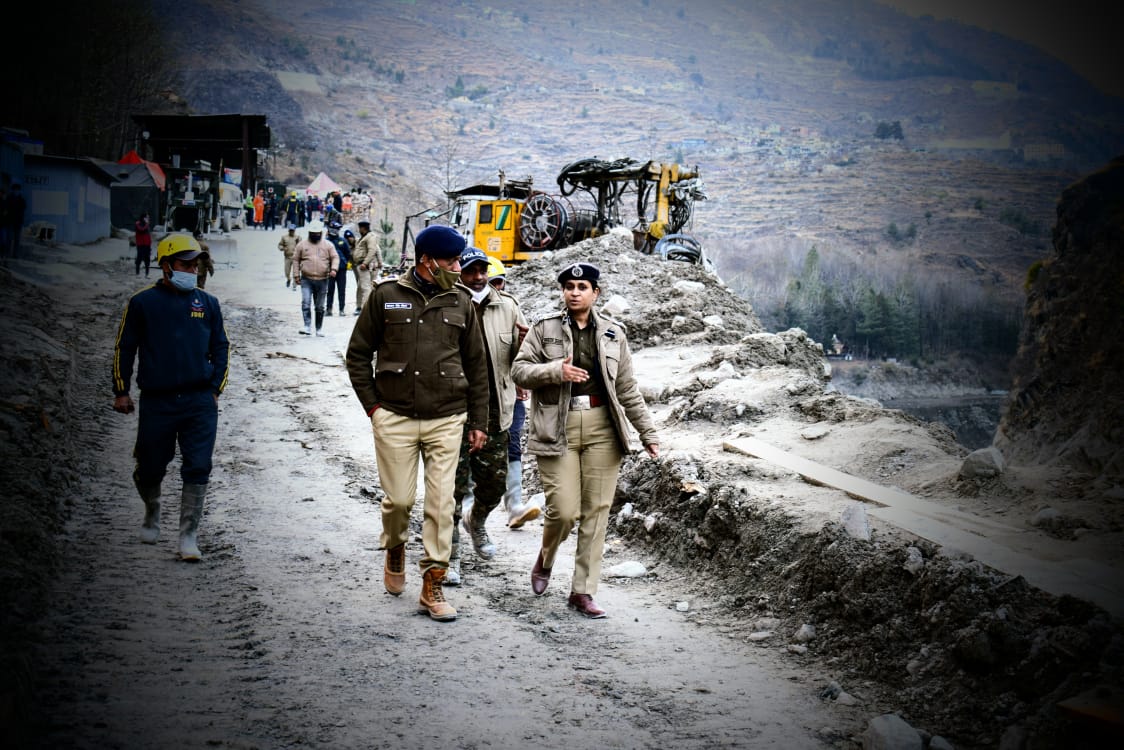Meet the Women IAS & IPS Officers Who Led the Rescue Operations in Chamoli
The glacier burst in Uttarakhand on 7 February 2021 has caused unprecedented harm to both life and material. Meet the two women officers who are leading rescue operations.

“On 7 February 2021, I got news of a disaster having occurred in Chamoli. I was in a town called Gopeshwar, Uttarakhand and could rush to the site immediately. I knew that Chamoli is a disaster-prone zone, but I had no idea of the magnitude of the disaster,” begins IAS officer Swati Bhadoria, District Magistrate, Chamoli. She is one of the four female administrators—which includes DIG Garhwal range Neeru Garg, Indo-Tibetan Border Force (ITBP) DIG Aparna Kumar, and State Disaster Response Fund (SDRF) DIG Riddhim Aggarwal—who are anchoring the rescue and relief operations in the Himalayan terrains.
That fateful morning of 7 February a horrific disaster reminiscent of the 2013 Kedarnath tragedy occurred when a huge glacier burst in the Tapovan area of Uttarakhand’s Chamoli district in the Garhwal Himalayas.
The Better India caught up with two of the officers—IAS officer Swati Bhadoria, DM Chamoli, and DIG Garhwal Range Neeru Garg—to get their perspectives of the operations.
Call To Rescue

It was on her drive to the affected area that Swati started getting numerous calls, each one describing the tragedy to her. She mentions that by the time she reached the area she had a fair idea of what she was up against.
“Once I reached the site, I was apprised of the situation and was told that almost 150 people were missing,” she says. The first rescue operation involved getting people who were stuck in the hydropower plant tunnel out, and that gave the team some confidence to go on. There were also so many people who unfortunately got washed away by the flooding that happened. “Even in those cases we had to make a list of the people, send it to the various state governments,” she says.
As for Neeru, she was in Dehradun when she got a call about a possible avalanche or ‘cloud burst’. She says, “No one knew what exactly had happened. What I was told was how there was debris all around. Once we reached the site, our first operation involved rescuing the 12 people stuck in the tunnel.” All the districts in the downstream area had to be alerted, and some, even evacuated, she says.
The disheartening sights of broken, destroyed buildings, homes, and slush were everywhere on social media. The more difficult sights were of the people of the valley, most of whom had lost something or someone to the disaster. Bodies being recovered from unlikely places, including the river bed, is something that will never be forgotten in years to come. Neeru, who spent 10 days at the site and returned to Dehradun on 16 February 2021, aptly says how these were the tough moments.
Dealing with Adversities

Source: Westpendam Haalkhabar/Facebook
Swati says the challenges in this mission were plenty. From not having any idea of the number of missing people to figuring out ways in which those trapped could be rescued — these officers were behind it all. “The terrain did not aid us much in our rescue operations,” she adds. Swati is still at the site and says that even now, almost 10 days after the glacier burst, rescue operations are still underway.
Neeru was the Superintendent of Police (SP) of Rudraprayag in 2008, and in 2013 she was posted as commandant Indian Reserve Battalion 2 Uttarakhand when the Kedarnath disaster occurred. She says that knowing the lay of the land has helped her in this mission. “This has certainly been one of the most challenging missions I have been a part of. Even now, with the passage of time, we are doing round the clock rescue operations,” she says. The first few days were very intense and the hope of saving as many lives as possible kept the team going.
Both Swati and Neeru agree that rescue missions of this nature are not just physically taxing but also very emotionally draining.

Speaking about missing family at a time like this, Neeru sums it up best saying, “It’s my duty that trumps everything, no matter what. I have a nine-year-old daughter who understands what my job is. Every day when I video called her, she would ask when I would return but never cried and made it difficult for me to go on with my job.”
(Edited by Yoshita Rao)
If you found our stories insightful, informative, or even just enjoyable, we invite you to consider making a voluntary payment to support the work we do at The Better India. Your contribution helps us continue producing quality content that educates, inspires, and drives positive change.
Choose one of the payment options below for your contribution-
By paying for the stories you value, you directly contribute to sustaining our efforts focused on making a difference in the world. Together, let’s ensure that impactful stories continue to be told and shared, enriching lives and communities alike.
Thank you for your support. Here are some frequently asked questions you might find helpful to know why you are contributing?


This story made me
-
97
-
121
-
89
-
167











